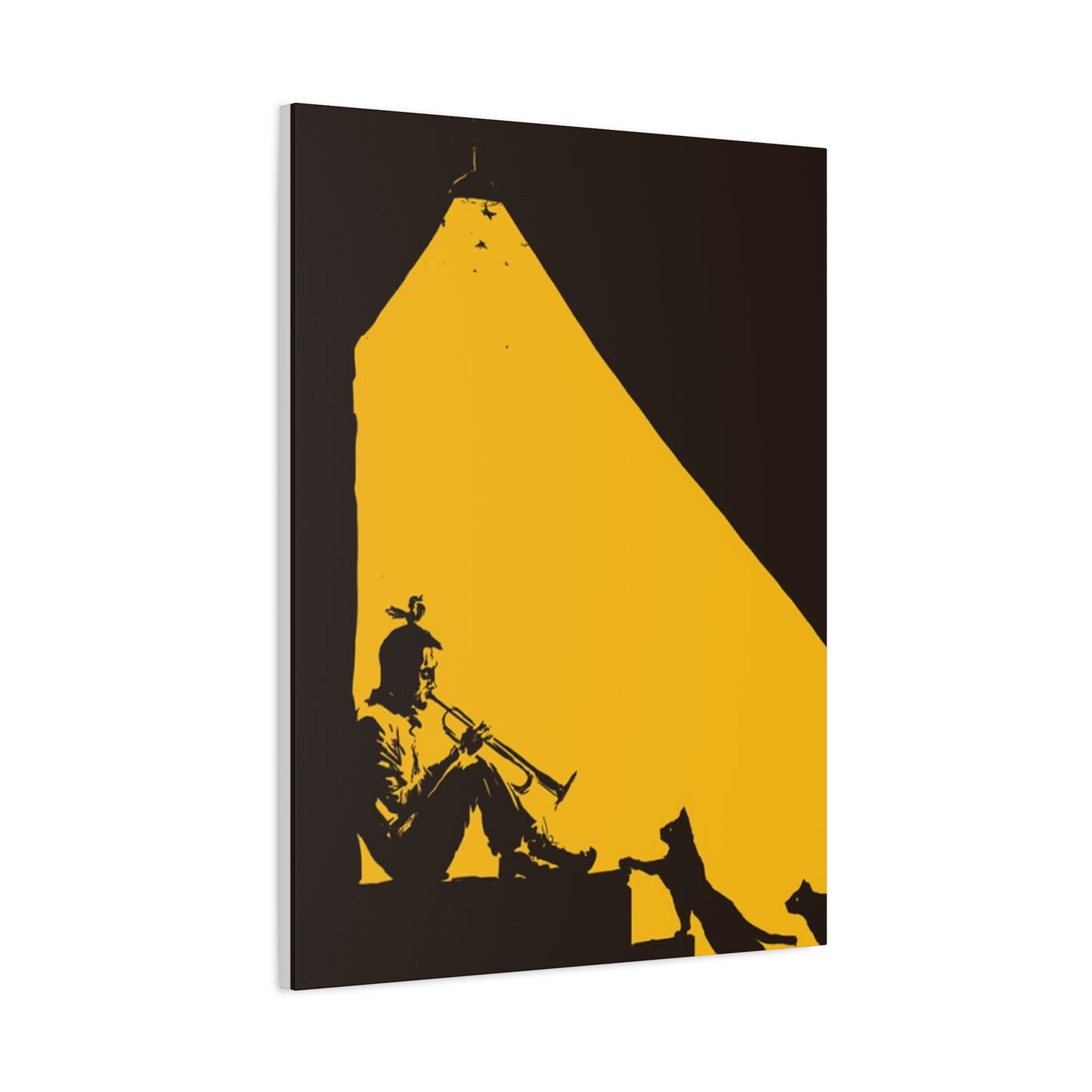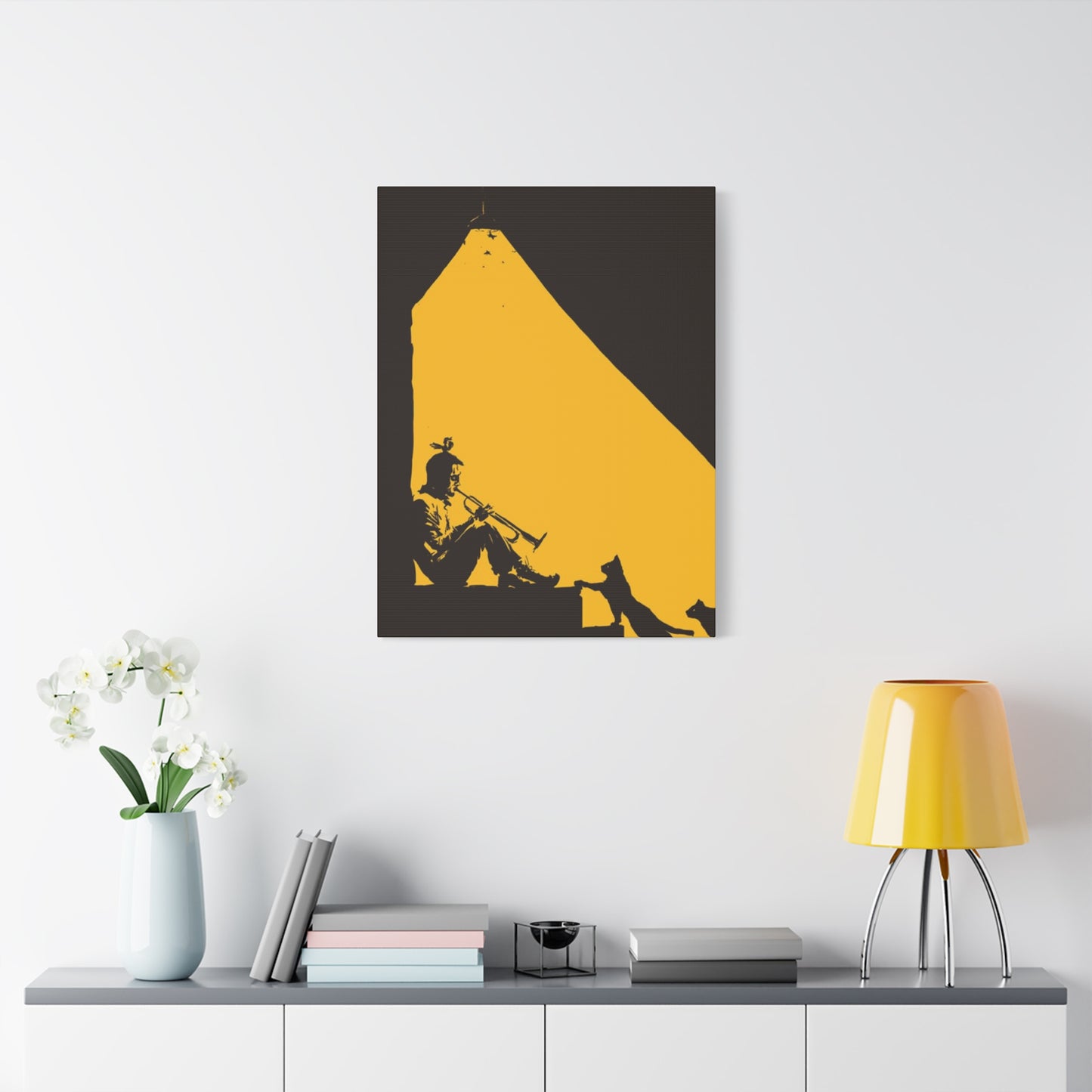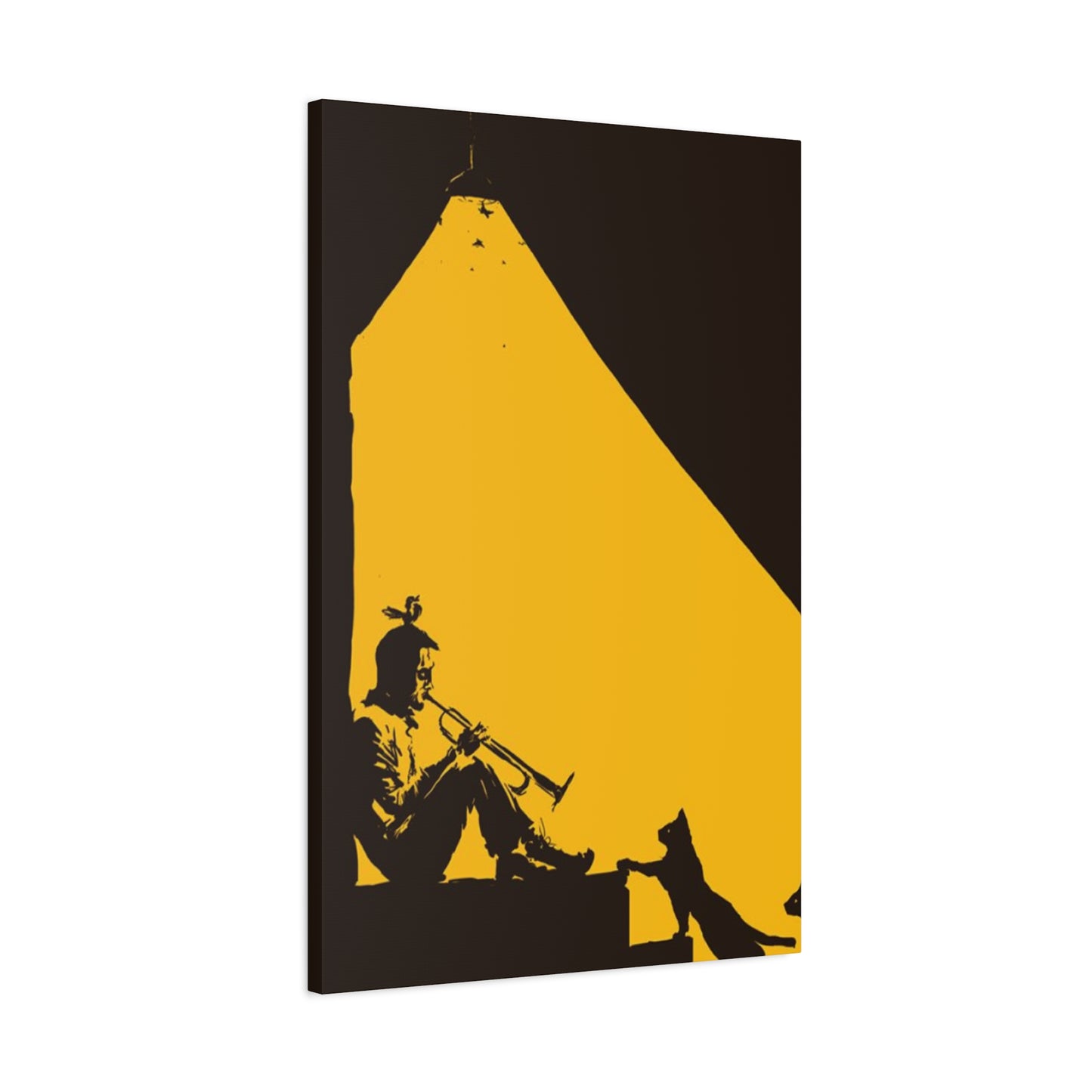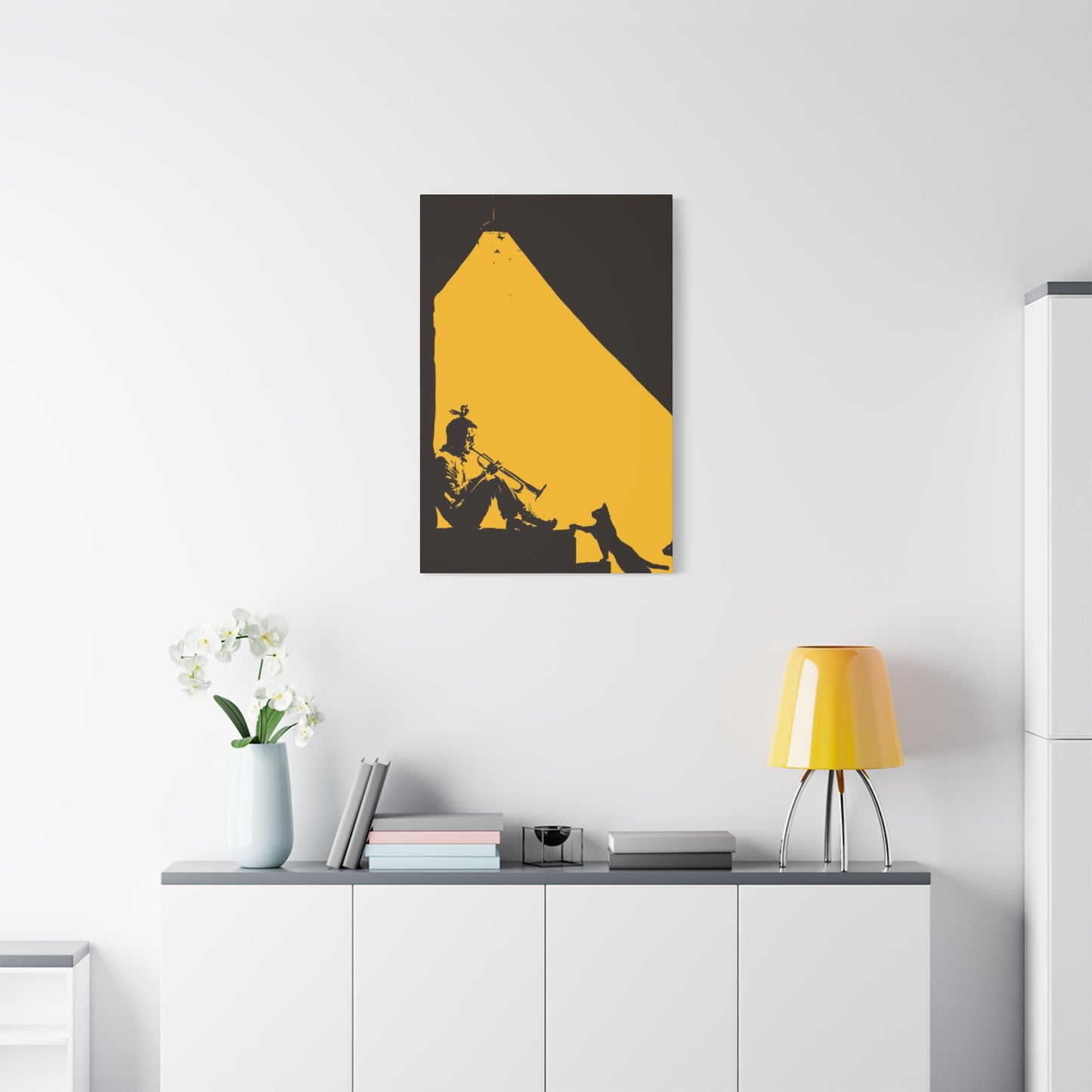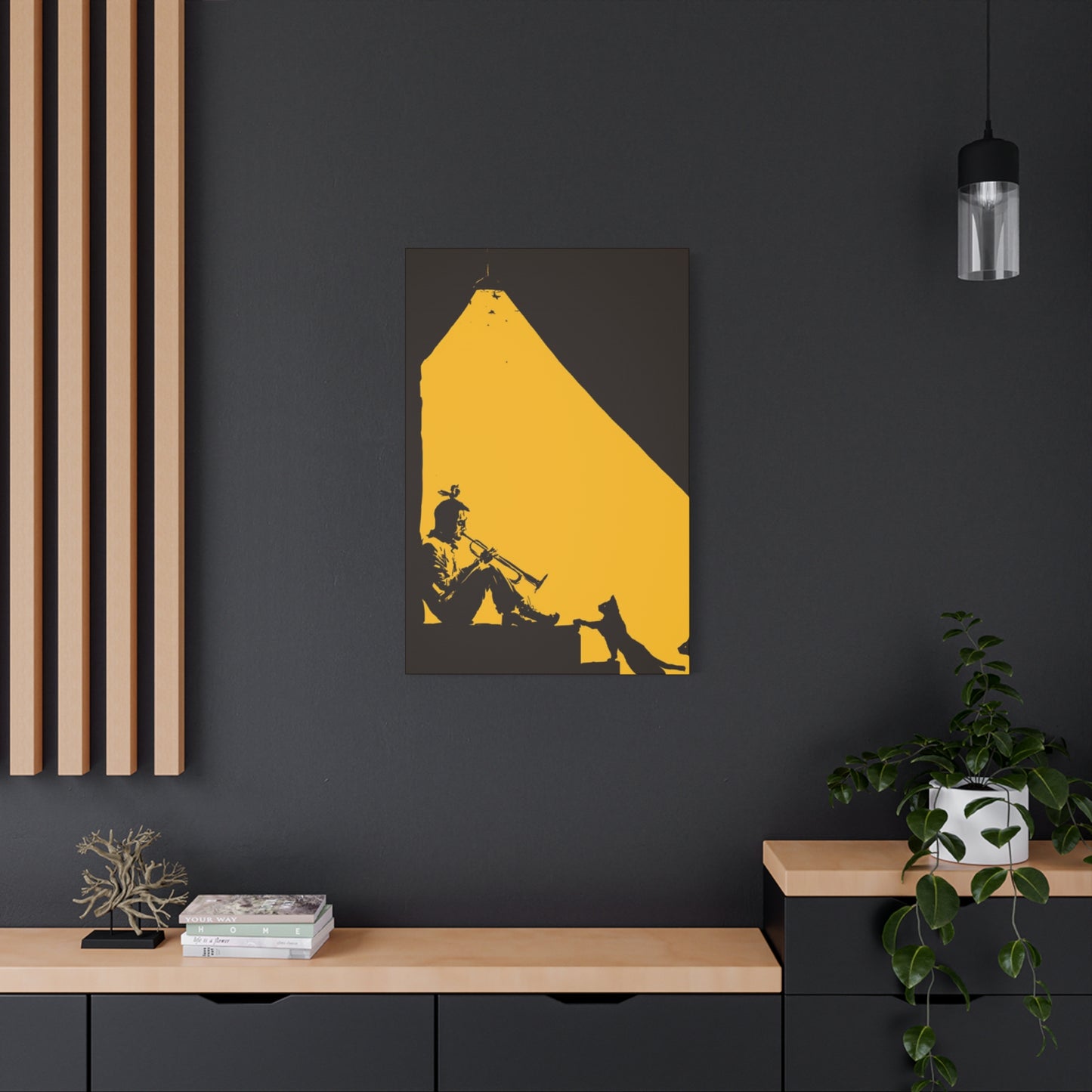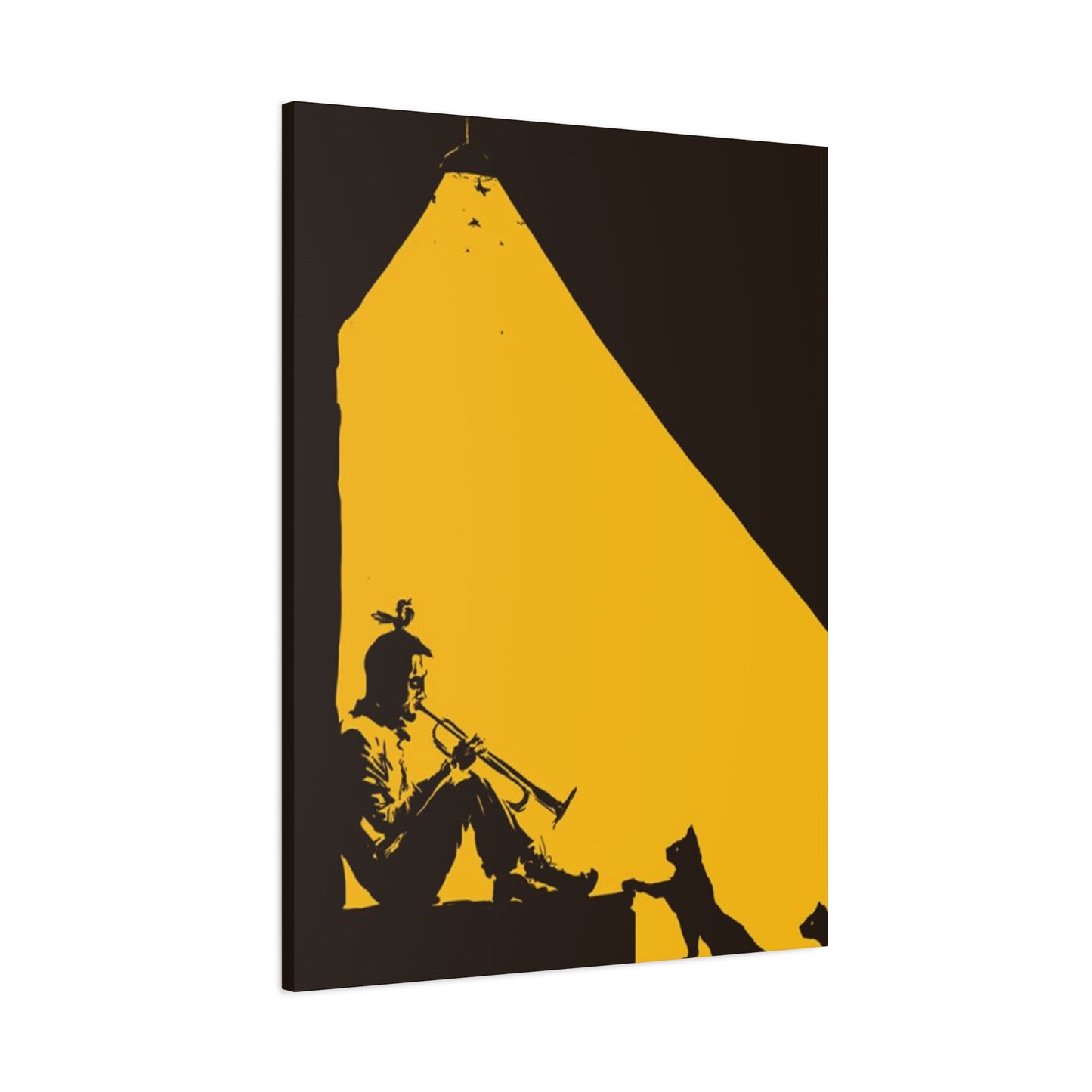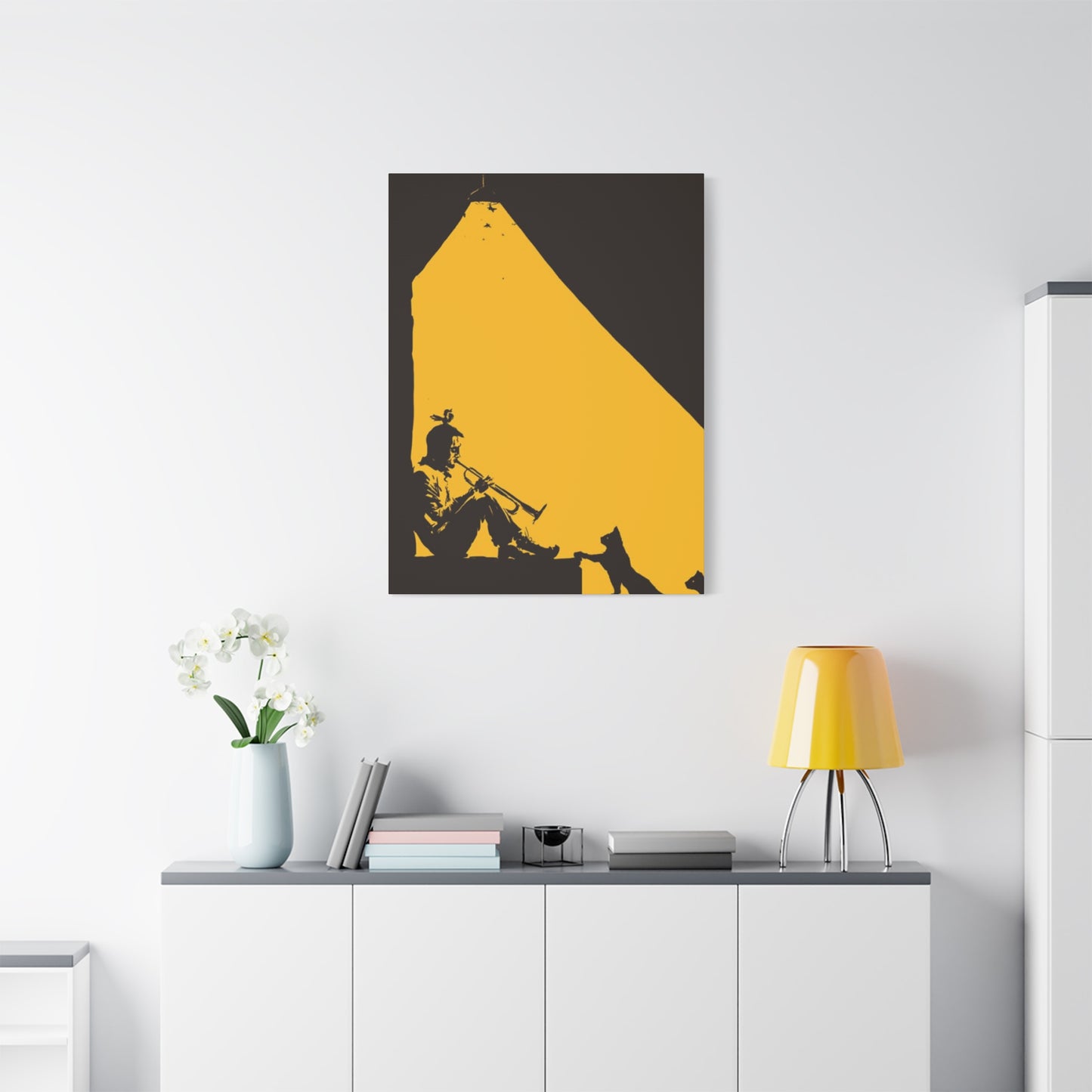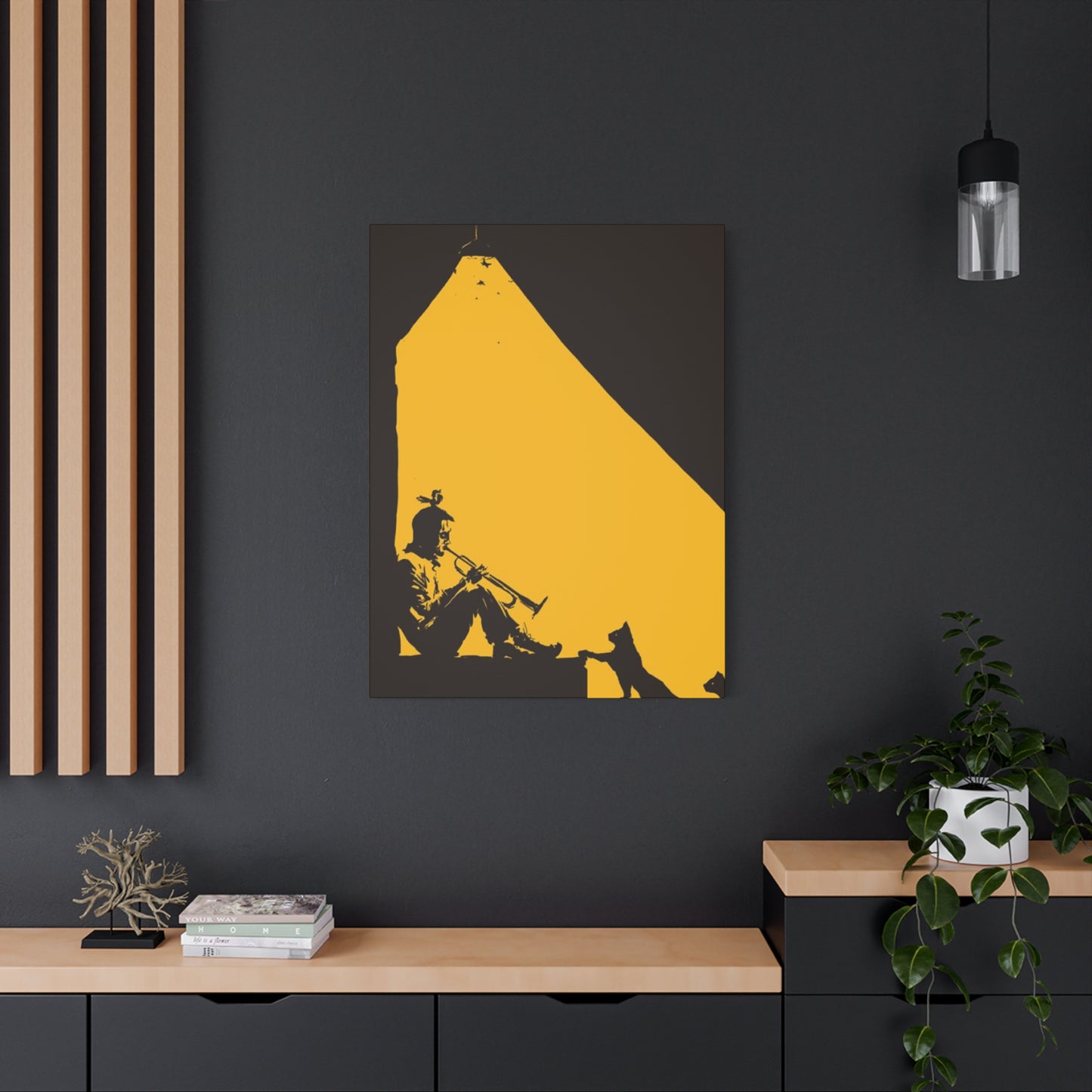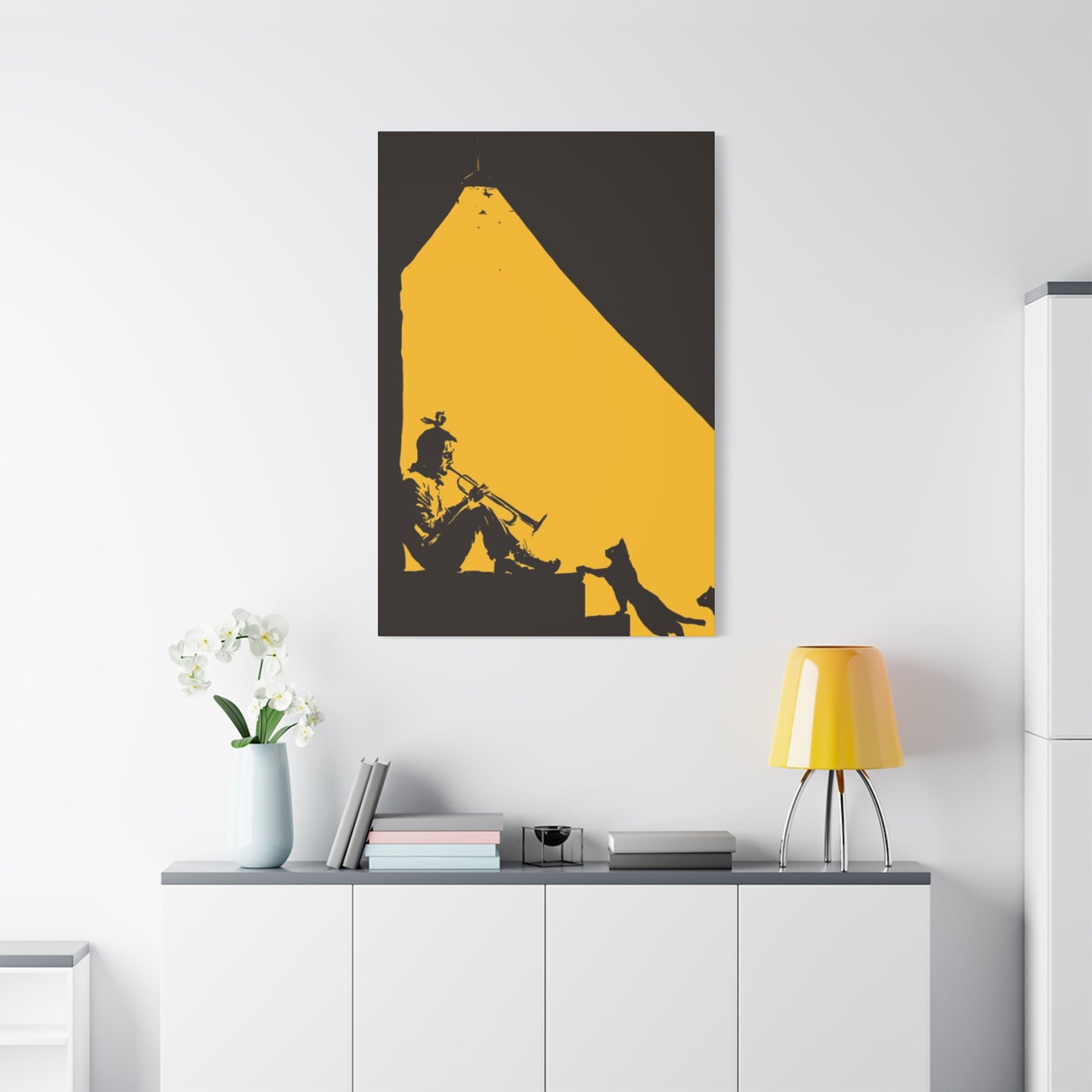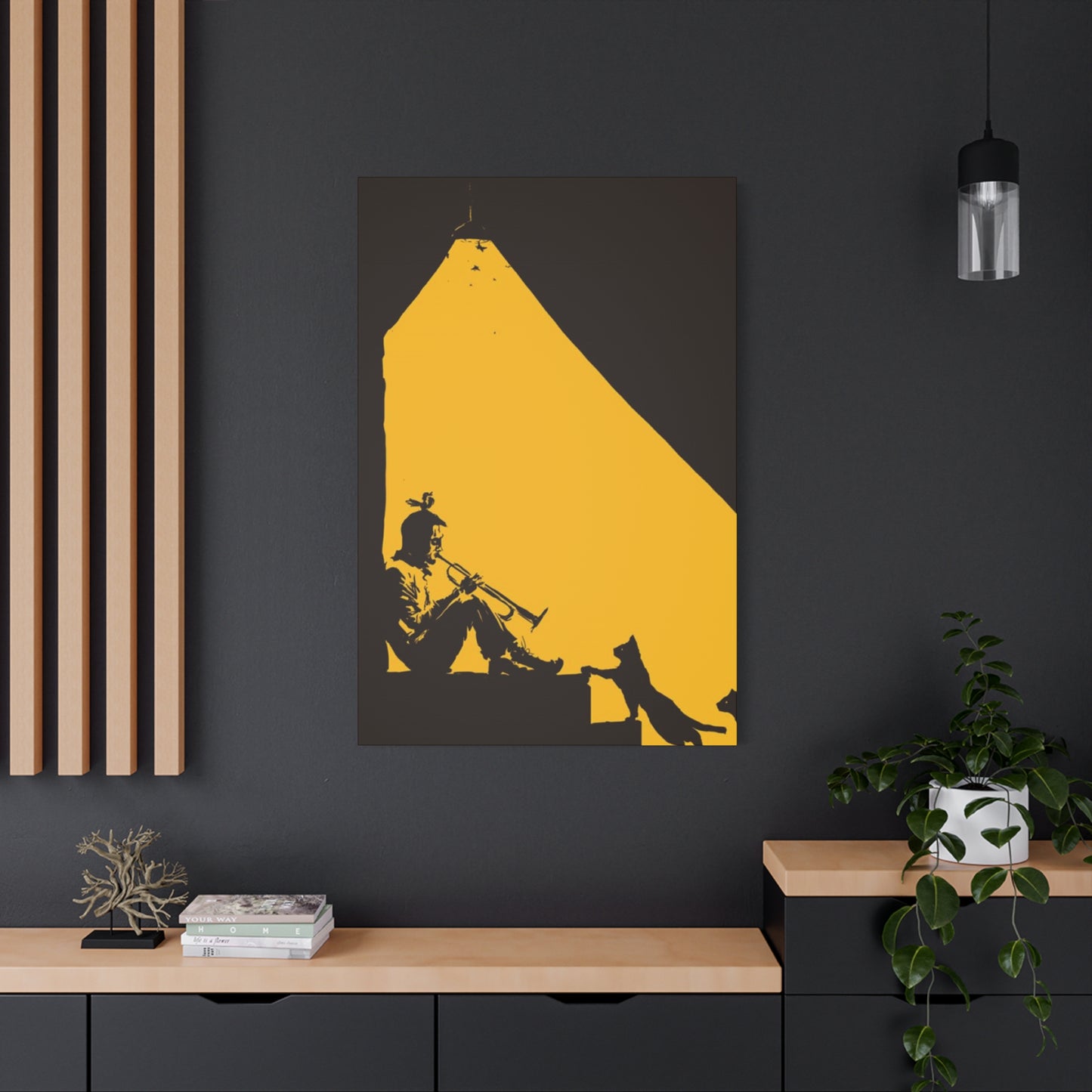Jazz Saxophone Artist Wall Art: Canvas Paintings for Music Lovers
The world of jazz saxophone art represents a captivating fusion where musical passion meets visual creativity, creating stunning masterpieces that celebrate the soul-stirring essence of this beloved instrument. Artists worldwide have discovered the magnetic appeal of incorporating saxophone imagery into their work, resulting in breathtaking pieces that capture the dynamic energy, emotional depth, and cultural significance of jazz music. These artistic creations serve as powerful expressions that transcend traditional boundaries between auditory and visual art forms, offering viewers an opportunity to experience the rhythm, melody, and spirit of jazz through carefully crafted visual narratives.
Jazz saxophone art encompasses a diverse range of styles, techniques, and interpretations that reflect the multifaceted nature of both jazz music and contemporary artistic expression. From photorealistic portrayals that showcase every intricate detail of the instrument to abstract interpretations that focus on capturing the essence of musical energy, these artworks demonstrate the versatility and endless creative possibilities that emerge when artists channel their passion for jazz into visual form. The popularity of saxophone-themed artwork continues to grow as more people recognize the power of combining musical appreciation with interior design, creating spaces that reflect their love for this iconic instrument and the rich cultural heritage it represents.
Contemporary artists approach saxophone art with various techniques and perspectives, utilizing everything from traditional oil paints and watercolors to modern digital media and mixed-media installations. This diversity in approach ensures that there is something for every aesthetic preference and artistic taste, whether someone prefers classical realism, contemporary abstraction, or cutting-edge digital compositions. The evolution of saxophone art reflects broader trends in both the art world and jazz appreciation, demonstrating how visual artists continue to find new ways to interpret and celebrate this timeless musical tradition.
Smooth Jazz Saxophone Paintings
Smooth jazz saxophone paintings represent one of the most popular and commercially successful categories within the broader realm of jazz-inspired artwork. These pieces typically feature elegant, flowing compositions that mirror the sophisticated and mellow characteristics of smooth jazz music itself. Artists creating smooth jazz saxophone paintings often employ soft color palettes, gentle brushstrokes, and harmonious compositions that evoke the relaxing and contemplative nature of this musical genre.
The appeal of smooth jazz saxophone paintings lies in their ability to create a serene and sophisticated atmosphere in any space where they are displayed. These artworks often feature saxophonists in intimate performance settings, such as dimly lit jazz clubs, elegant lounges, or peaceful outdoor venues. The lighting in these paintings is typically warm and inviting, creating a sense of intimacy and connection between the viewer and the musical performance depicted on the canvas.
Many smooth jazz saxophone paintings incorporate elements of urban sophistication, featuring well-dressed musicians performing in upscale environments that reflect the refined nature of the genre. The backgrounds often include subtle architectural details, atmospheric lighting effects, and carefully composed environments that complement the central focus on the saxophone and its player. These artistic choices help create a cohesive visual narrative that captures the essence of smooth jazz culture and its association with elegance and refinement.
Color schemes in smooth jazz saxophone paintings tend to favor warm, muted tones that create a sense of comfort and relaxation. Earth tones, deep blues, rich purples, and golden hues are commonly used to establish the sophisticated ambiance that characterizes this style of artwork. The careful selection and application of these colors help create depth and dimension while maintaining the gentle, flowing quality that defines smooth jazz aesthetic.
Artists working in this style often pay particular attention to the rendering of light and shadow, using these elements to create mood and atmosphere that enhances the overall impact of the piece. The interplay of light and shadow can dramatically affect how viewers perceive and respond to the artwork, with skilled artists using these techniques to guide the eye through the composition and emphasize key elements of the scene.
The popularity of smooth jazz saxophone paintings extends beyond traditional art collectors to include interior designers, hospitality professionals, and individuals seeking to create sophisticated living and working environments. These pieces work particularly well in settings such as restaurants, hotels, offices, and residential spaces where a refined, calming atmosphere is desired. The versatility of smooth jazz saxophone paintings makes them suitable for a wide range of decorative applications and interior design styles.
Vibrant Saxophone Wall Art
Vibrant saxophone wall art represents a dynamic and energetic approach to jazz-inspired visual expression, characterized by bold colors, dramatic contrasts, and powerful visual impact. Unlike the subtle sophistication of smooth jazz paintings, vibrant saxophone wall art embraces the explosive energy and passionate intensity that jazz music can embody. These pieces often feature brilliant reds, electric blues, vibrant oranges, and striking yellows that create immediate visual impact and command attention from viewers.
The creation of vibrant saxophone wall art requires artists to master the challenging balance between bold color choices and compositional harmony. Too much intensity can overwhelm viewers, while too little can fail to capture the energetic spirit that defines this artistic style. Successful vibrant saxophone wall art achieves the perfect equilibrium, creating pieces that are visually striking without being chaotic or overwhelming to experience over extended periods.
Contemporary artists working in this style often draw inspiration from various sources, including abstract expressionism, pop art, and street art movements. This diverse range of influences results in saxophone wall art that reflects current artistic trends while maintaining a strong connection to jazz musical traditions. The fusion of classical musical themes with contemporary artistic techniques creates unique pieces that appeal to both traditional jazz enthusiasts and modern art collectors.
Digital art techniques have opened new possibilities for creating vibrant saxophone wall art, allowing artists to experiment with color combinations, effects, and compositions that would be difficult or impossible to achieve using traditional media alone. Digital tools enable precise color control, layering effects, and the ability to create multiple variations of a single composition, giving artists greater flexibility in their creative process and allowing them to push the boundaries of what is possible in saxophone-themed artwork.
The market for vibrant saxophone wall art continues to expand as more people seek artwork that makes bold statements in their living and working spaces. These pieces work particularly well in modern and contemporary interior design schemes, where their dynamic energy can complement minimalist furniture and clean architectural lines. The contrast between bold artwork and simplified surroundings creates visual interest and helps establish focal points within interior spaces.
Printing technologies have made vibrant saxophone wall art more accessible to a broader audience, with high-quality reproductions available in various sizes and formats to suit different spaces and budgets. Canvas prints, metal prints, and acrylic displays each offer unique advantages for presenting vibrant artwork, with artists and collectors choosing formats based on their specific aesthetic preferences and installation requirements.
Capturing Jazz on Canvas
Capturing jazz on canvas represents one of the most challenging and rewarding endeavors for artists seeking to translate the ephemeral nature of musical performance into lasting visual form. The process requires artists to understand not only the technical aspects of painting and composition but also the cultural, emotional, and spiritual dimensions of jazz music itself. Successful jazz paintings achieve the remarkable feat of making viewers feel as though they can hear the music simply by looking at the artwork.
The challenge of capturing jazz on canvas begins with the fundamental difference between temporal and spatial art forms. Music exists in time, with melodies, rhythms, and harmonies unfolding sequentially to create emotional and intellectual experiences. Visual art, by contrast, presents all its elements simultaneously, requiring viewers to process the entire composition at once. Artists must therefore find ways to suggest movement, rhythm, and temporal progression within the static medium of paint on canvas.
Many successful jazz paintings employ compositional techniques that create visual rhythm and movement, mimicking the musical elements they seek to represent. Repeated shapes, rhythmic color patterns, and flowing lines can all contribute to the sense that the artwork contains musical energy waiting to be released. The positioning of figures, instruments, and background elements can guide the viewer's eye through the composition in ways that mirror the progression of a musical piece.
Color plays a crucial role in capturing jazz on canvas, with different hues and combinations evoking various emotional and musical associations. Cool blues might suggest the melancholy of a late-night ballad, while warm oranges and reds could represent the heat and passion of an uptempo swing number. The skilled use of color temperature, saturation, and contrast allows artists to create emotional atmospheres that resonate with the feelings typically associated with different types of jazz music.
Brushwork and painting technique also contribute significantly to the success of jazz paintings. Loose, gestural brushstrokes can suggest the spontaneous improvisation that is central to jazz performance, while more controlled techniques might be used to represent the structured elements of musical composition. Many artists develop signature techniques for representing musical elements, such as specific ways of painting saxophone bells, drum heads, or piano keys that become recognizable aspects of their artistic style.
The most effective jazz paintings often combine realistic representation with expressive interpretation, showing recognizable musical scenes while infusing them with artistic vision and creative interpretation. This balance allows viewers to connect with familiar imagery while experiencing the artist's unique perspective on jazz culture and musical expression. The result is artwork that serves both as documentation of jazz performance and as original creative expression in its own right.
Saxophone Silhouettes in Paint
Saxophone silhouettes in paint represent a particularly elegant and sophisticated approach to jazz-inspired artwork, utilizing the power of simplified forms to create maximum visual impact. The silhouette technique removes distracting details and focuses attention on the essential shapes and forms that make the saxophone immediately recognizable, creating artwork that is both minimalist and deeply evocative of musical expression.
The effectiveness of saxophone silhouettes lies in the instrument's distinctive and instantly recognizable shape, which remains powerful and meaningful even when reduced to its most basic outline. The curved body, extended neck, and characteristic bell of the saxophone create a graceful and dynamic silhouette that artists can use as a foundation for various artistic interpretations and stylistic approaches.
Artists working with saxophone silhouettes often experiment with different background treatments to enhance the visual impact of the simplified instrumental forms. Dramatic color gradients, textured backgrounds, and atmospheric effects can all serve to highlight the saxophone silhouette while creating emotional depth and visual interest. The contrast between the stark simplicity of the silhouette and the complexity of the background can create powerful visual tension that draws viewers into the artwork.
Lighting effects play a crucial role in saxophone silhouette paintings, with artists using various techniques to suggest stage lighting, club atmospherics, or outdoor performance environments. Backlighting can create dramatic rim lighting effects around the saxophone silhouette, while side lighting can emphasize the three-dimensional qualities of the instrument even within a simplified representation. These lighting choices help establish mood and context for the silhouetted forms.
The versatility of saxophone silhouettes makes them suitable for a wide range of artistic styles and decorative applications. Minimalist interpretations work well in contemporary settings, while more elaborate treatments can complement traditional or eclectic interior design schemes. The simplicity of the silhouette form also makes it easier to reproduce and scale for different applications, from small personal artworks to large-scale commercial installations.
Color choices in saxophone silhouette paintings can range from monochromatic treatments that emphasize form and contrast to vibrant multi-color compositions that celebrate the energy and diversity of jazz music. Black silhouettes against colorful backgrounds create classic, high-contrast effects, while colored silhouettes can add warmth and personality to the composition. The flexibility of the silhouette approach allows artists to adapt their color choices to specific aesthetic requirements or personal preferences.
Artistic Jazz Moments for Home
Artistic jazz moments for home represent a growing trend in residential interior design, where homeowners seek to incorporate their love of jazz music into their living spaces through carefully selected artwork. These pieces serve multiple functions, acting as decorative elements, conversation starters, and expressions of personal taste and cultural appreciation. The selection of jazz-themed artwork for home environments requires consideration of both aesthetic and functional factors.
The placement of jazz artwork within residential spaces significantly impacts its effectiveness and the overall atmosphere it creates. Living rooms, dining areas, and entertainment spaces are natural locations for jazz-themed pieces, as these areas often serve as gathering places where the social and cultural aspects of jazz can be appreciated and shared with guests. The scale and style of the artwork should complement the room's proportions and existing decor while adding visual interest and personality.
Home collectors of jazz artwork often develop personal relationships with specific artists or artistic styles, building collections that reflect their individual tastes and musical preferences. Some focus on representations of famous jazz musicians, while others prefer abstract interpretations of musical themes. The diversity of available styles and approaches ensures that every jazz enthusiast can find artwork that resonates with their personal aesthetic sensibilities and home decor requirements.
The emotional impact of jazz artwork in residential settings extends beyond mere decoration, contributing to the creation of spaces that feel welcoming, sophisticated, and culturally enriched. These pieces can serve as daily reminders of the beauty and complexity of jazz music, inspiring residents and guests to appreciate both visual and musical art forms. The presence of quality jazz artwork can elevate the intellectual and cultural atmosphere of a home environment.
Lighting considerations play an important role in the successful display of jazz artwork in residential settings. Proper lighting can enhance colors, create mood, and ensure that the artwork remains visible and impactful throughout different times of day. Track lighting, picture lights, and carefully positioned lamps can all contribute to effective artwork presentation, while natural light sources should be managed to prevent fading or damage to valuable pieces.
The investment value of jazz artwork continues to grow as more collectors recognize the cultural significance and artistic merit of these pieces. High-quality original works and limited-edition prints can appreciate in value over time, making them both decoratively and financially rewarding additions to home environments. The combination of personal enjoyment and potential investment return makes jazz artwork an attractive option for discerning homeowners.
Abstract Saxophone Paintings
Abstract saxophone paintings push the boundaries of traditional representation, utilizing color, form, and composition to capture the essence of jazz music without relying on literal depictions of instruments or musicians. These works challenge viewers to experience jazz through pure visual elements, creating emotional and intellectual connections that transcend the limitations of representational art. The abstract approach allows artists to explore the conceptual and emotional aspects of jazz in ways that realistic paintings cannot achieve.
The creation of effective abstract saxophone paintings requires artists to understand the fundamental elements that make jazz music emotionally resonant and then translate those qualities into visual form. Rhythm becomes pattern and repetition, melody transforms into flowing lines and curves, while harmony emerges through color relationships and compositional balance. The challenge lies in maintaining enough connection to jazz themes that viewers can recognize the musical inspiration while allowing sufficient artistic freedom for creative interpretation.
Color relationships in abstract saxophone paintings often reflect the emotional and tonal qualities associated with jazz music. Warm and cool color contrasts can suggest the tension and resolution found in jazz harmonies, while gradual color transitions might represent the smooth flow of a saxophone melody. The intensity and saturation of colors can evoke different musical dynamics, from the subtle whispers of a ballad to the bold declarations of a bebop improvisation.
Compositional techniques in abstract saxophone paintings frequently employ principles derived from musical structure and jazz improvisation methods. Repetition and variation, call and response patterns, and improvised elements can all find visual expression through careful arrangement of forms, colors, and textures. These compositional choices help create artwork that feels authentically connected to jazz musical traditions while remaining firmly within the realm of abstract visual art.
The market for abstract saxophone paintings continues to expand as collectors seek artwork that offers both aesthetic appeal and intellectual challenge. These pieces work particularly well in contemporary and modern interior design schemes, where their conceptual nature complements minimalist and sophisticated decorative approaches. The non-literal nature of abstract work also makes it more versatile for different cultural and personal contexts.
Texture and surface treatment play important roles in abstract saxophone paintings, with artists using various techniques to create visual and tactile interest that enhances the overall impact of their work. Heavy impasto, glazing techniques, mixed media applications, and experimental mark-making all contribute to the sensory richness that makes abstract jazz paintings compelling and engaging for viewers.
Saxophone in Motion: Wall Art
Saxophone in motion wall art captures the dynamic energy and physical movement that characterize live jazz performance, utilizing various artistic techniques to suggest movement, rhythm, and the passage of time within static visual compositions. These pieces recognize that jazz is fundamentally a performance art, with physical gesture and movement playing crucial roles in the creation and expression of the music itself.
The challenge of depicting motion in static artwork has inspired artists throughout history, and saxophone in motion paintings continue this tradition while addressing the specific characteristics of jazz performance. The curved body of the saxophone lends itself naturally to suggestions of movement, with artists using the instrument's form as a foundation for creating dynamic compositions that seem to pulse with musical energy.
Artistic techniques for suggesting motion in saxophone wall art include the use of flowing lines, multiple exposure effects, and gestural brushwork that captures the essence of performance movement. Some artists employ photographic influences, creating painted versions of motion blur effects or multiple exposures that show the saxophone and musician in various stages of movement throughout a performance. These techniques help bridge the gap between the temporal nature of music and the spatial qualities of visual art.
The positioning and gesture of musicians in saxophone motion paintings requires careful consideration of body language, instrument handling, and performance posture. Experienced jazz artists develop distinctive physical styles that become part of their musical identity, and skilled painters can capture these individual characteristics while creating artwork that speaks to universal aspects of jazz performance. The interaction between musician and instrument becomes a dance that artists can interpret and express through paint.
Color and brushwork in motion-based saxophone paintings often emphasize energy and spontaneity, with artists using techniques that mirror the improvisational nature of jazz music itself. Quick, confident brushstrokes can suggest the rapid passages of bebop improvisation, while smoother, more controlled painting techniques might represent the flowing melodies of ballad performances. The painting process itself becomes a form of musical expression.
Background elements in saxophone motion wall art frequently include suggestions of performance environments, audience reactions, and atmospheric effects that help establish the context and energy of live jazz performance. These elements work together to create comprehensive visual narratives that transport viewers into the world of jazz clubs, concert halls, and outdoor festivals where the magic of live performance unfolds.
Modern Jazz Canvas Ideas
Modern jazz canvas ideas reflect the continued evolution of both jazz music and contemporary art, incorporating current artistic trends, technological innovations, and cultural perspectives into traditional jazz-themed artwork. These concepts push beyond historical representations to explore how jazz culture and music continue to develop and influence contemporary artistic expression.
Digital integration represents one of the most significant developments in modern jazz canvas ideas, with artists incorporating digital elements, QR codes, and interactive features that can enhance the viewer's experience of the artwork. These technological additions might provide access to related musical recordings, artist interviews, or supplementary visual content that extends the artwork's impact beyond the physical canvas itself.
Contemporary color palettes in modern jazz canvas art often reflect current design trends while maintaining connection to jazz musical traditions. Neon accents, metallic elements, and unconventional color combinations can create fresh interpretations of classic jazz themes, appealing to younger audiences while respecting the historical significance of the music. These color choices help bridge generational gaps and maintain jazz relevance in contemporary culture.
Mixed media approaches in modern jazz canvas work incorporate materials and techniques that were not available to earlier generations of artists, including synthetic materials, digital prints, photographic elements, and three-dimensional components. These expanded material options allow artists to create more complex and engaging artworks that can compete for attention in an increasingly visual and media-saturated culture.
Cultural diversity and inclusion have become important considerations in modern jazz canvas ideas, with artists working to represent the full spectrum of jazz musicians and cultural influences that have shaped the music's development. This inclusive approach helps ensure that jazz artwork reflects the true diversity of jazz culture while appealing to broader, more diverse audiences.
Environmental consciousness influences modern jazz canvas ideas through the selection of sustainable materials, eco-friendly production methods, and themes that address contemporary social and environmental concerns. These considerations reflect the growing awareness of art's environmental impact while maintaining the quality and aesthetic appeal that jazz artwork demands.
Musical Energy in Paint
Musical energy in paint represents one of the most challenging and rewarding aspects of creating jazz-inspired artwork, requiring artists to find visual equivalents for the dynamic, temporal, and emotional qualities that define musical expression. The successful translation of musical energy into paint creates artwork that resonates with viewers on both intellectual and emotional levels, providing experiences that transcend the boundaries between different art forms.
The understanding of musical energy requires artists to analyze and internalize the various components that create the powerful emotional impact of jazz performance. Rhythm, melody, harmony, dynamics, and improvisation all contribute to the overall energy of jazz music, and each element presents unique challenges when artists attempt to represent them through visual means. The complexity of these musical elements demands sophisticated artistic techniques and deep understanding of both musical and visual principles.
Rhythm finds visual expression through repetitive elements, patterns, and compositional structures that create visual beats and pulses throughout the painted surface. Artists might use repeated shapes, color patterns, or textural elements to establish rhythmic foundations that support other visual elements in the composition. The spacing and timing of these repetitive elements can suggest different rhythmic feels, from the steady pulse of swing music to the complex polyrhythms of modern jazz.
Melody translates into paint through flowing lines, color progressions, and forms that guide the viewer's eye through the composition in ways that mirror the progression of musical phrases. The rise and fall of melodic lines can be represented through the vertical positioning of elements, while the smooth or angular nature of melodies influences the character of the lines and forms used to represent them. Color changes can suggest the tonal variations that give melodies their distinctive character and emotional impact.
Harmony appears in painted form through color relationships, spatial arrangements, and the overall balance of compositional elements. Just as musical harmony creates tension and resolution through the interaction of different tones, visual harmony emerges from the careful balance of colors, forms, and spatial relationships that create satisfying and emotionally resonant compositions. The complexity of jazz harmony challenges artists to develop sophisticated approaches to color theory and compositional design.
Dynamic contrast, so crucial to effective musical performance, requires artists to create visual equivalents for the loud and soft passages, intense and gentle moments, and dramatic contrasts that give jazz music its emotional power. These dynamics can be represented through color intensity, brushwork energy, scale relationships, and the overall visual weight of different elements within the composition.
Sax and Soul: Artistic Decor
Sax and soul artistic decor represents a sophisticated approach to interior design that combines the aesthetic appeal of jazz-themed artwork with the deeper cultural and emotional significance of jazz music in American and global culture. This decorative philosophy recognizes that jazz-themed art serves purposes beyond mere decoration, functioning as expressions of cultural appreciation, personal identity, and artistic sophistication.
The concept of soul in jazz-themed decor refers to the emotional depth, cultural authenticity, and spiritual significance that characterize the best jazz music and, by extension, the visual art that celebrates it. Soulful jazz decor goes beyond surface-level musical imagery to explore the human experiences, cultural struggles, and artistic achievements that have shaped jazz music throughout its development. This approach creates decorative environments that honor the full complexity and significance of jazz culture.
Color psychology plays an important role in sax and soul decorative schemes, with artists and designers selecting hues that evoke the emotional depth and cultural richness associated with jazz music. Deep blues suggest the melancholy and longing found in blues-based jazz compositions, while warm golds and earth tones evoke the comfort and community aspects of jazz culture. The careful selection and combination of colors helps create environments that feel authentic to jazz traditions while remaining aesthetically pleasing.
Texture and material choices in sax and soul decor often reflect the organic, handmade qualities that characterize traditional jazz music and culture. Natural materials, handcrafted elements, and artisanal finishes help create environments that feel authentic and connected to the human traditions that created jazz music. These material choices also provide tactile interest that enhances the overall sensory experience of jazz-themed spaces.
The arrangement and presentation of jazz-themed decor requires consideration of how different elements work together to create cohesive and impactful environments. Artwork, lighting, furniture, and accessories must be carefully coordinated to support the overall jazz theme without becoming overwhelming or kitsch. The goal is to create sophisticated environments that celebrate jazz culture while remaining liveable and functional.
Personal expression within sax and soul decorative schemes allows individuals to incorporate their own musical preferences, cultural background, and aesthetic sensibilities into jazz-themed environments. This personalization ensures that each jazz-themed space reflects its owner's unique relationship with the music while maintaining connection to broader jazz cultural traditions. The result is decor that feels both personally meaningful and culturally authentic.
Live Jazz Inspired Paintings
Live jazz inspired paintings capture the immediate energy, spontaneous creativity, and communal atmosphere that characterize live jazz performance, creating visual representations that celebrate the unique magic of experiencing jazz music in person. These paintings recognize that jazz reaches its fullest expression in live performance settings, where the interaction between musicians, instruments, and audiences creates unrepeatable moments of musical transcendence.
The atmosphere of live jazz venues provides rich source material for artists creating performance-inspired paintings, with each type of venue offering distinct visual characteristics and cultural associations. Intimate jazz clubs with their dim lighting, close quarters, and casual atmosphere create different artistic opportunities than large concert halls, outdoor festivals, or street performances. Artists must understand and represent these environmental differences to create authentic and compelling live jazz artwork.
Audience interaction represents a crucial element in live jazz inspired paintings, as the relationship between performers and listeners contributes significantly to the energy and success of jazz performances. The facial expressions, body language, and positioning of audience members can convey the emotional impact of the music while adding human interest and cultural context to the painted scene. Skilled artists can capture the moment when music creates connection between strangers in a crowd.
The spontaneous nature of jazz improvisation presents unique challenges and opportunities for artists creating live performance paintings. The unpredictable elements of improvisation mean that each performance contains unique moments that cannot be exactly replicated, making live jazz paintings valuable records of specific musical events. Artists must develop techniques for capturing the essence of improvisation without becoming trapped in literal representation of specific musical moments.
Lighting effects in live jazz venues create dramatic visual opportunities that artists can exploit to enhance the emotional impact of their paintings. Stage lighting, ambient venue lighting, and the interplay of light and shadow all contribute to the visual drama of live performance. The careful representation of these lighting effects can transport viewers into the intimate world of live jazz performance.
The temporal aspects of live performance require artists to make creative decisions about which moments to capture and how to suggest the passage of time within static painted compositions. Some artists choose to represent single climactic moments, while others incorporate multiple time periods within single compositions. These choices significantly impact how viewers experience and interpret the artwork.
Saxophone Spotlight in Art
Saxophone spotlight in art explores the instrument's role as a focal point and visual anchor in jazz-themed compositions, utilizing artistic techniques that draw attention to the saxophone while creating balanced and engaging overall compositions. The spotlight concept can be interpreted both literally, through the representation of stage lighting effects, and metaphorically, through compositional choices that emphasize the saxophone's importance within jazz culture and musical expression.
The visual properties of the saxophone make it an ideal subject for spotlight treatment, with its golden brass surface naturally catching and reflecting light in ways that create visual interest and drama. Artists can exploit these reflective qualities to create paintings where the saxophone seems to glow with inner light, becoming a beacon that draws viewers into the composition while suggesting the instrument's central role in jazz music creation.
Compositional techniques for creating saxophone spotlights include the use of contrasting colors, strategic lighting effects, and careful positioning of the instrument within the overall design. The saxophone might be rendered in bright, warm tones against a darker background, or illuminated by depicted stage lights that create dramatic shadows and highlights. These techniques help establish visual hierarchy while creating emotional impact.
The symbolic significance of spotlighting the saxophone extends beyond mere visual emphasis to represent the instrument's cultural importance and the individual virtuosity of jazz musicians. The spotlight becomes a metaphor for recognition, achievement, and artistic excellence, acknowledging the skill and creativity required to master jazz saxophone performance. This symbolic dimension adds depth and meaning to saxophone spotlight paintings.
Background treatment in saxophone spotlight artwork requires careful balance between supporting the central focus and providing sufficient visual interest to create engaging compositions. Simplified backgrounds might emphasize the saxophone through contrast, while more detailed backgrounds can provide cultural context and environmental information. The key is finding the right balance for each specific artistic vision and intended audience.
Color temperature plays a crucial role in saxophone spotlight paintings, with warm lights suggesting the intimate, welcoming atmosphere of jazz performance while cooler background tones can create dramatic contrast and visual depth. The interplay between warm and cool colors helps create the visual drama that makes spotlight effects compelling and emotionally resonant.
Blue Notes on Canvas
Blue notes on canvas explores one of jazz music's most distinctive and emotionally powerful characteristics, translating the concept of blue notes and their associated feelings into visual art form. Blue notes, those slightly flattened tones that give blues and jazz music their characteristic emotional depth, represent a perfect example of how musical concepts can inspire and inform visual artistic expression.
The emotional significance of blue notes in jazz music provides artists with rich conceptual material for creating visually and emotionally compelling artwork. Blue notes typically convey feelings of longing, melancholy, hope, and resilience, emotions that have deep roots in African American cultural experience and continue to resonate with diverse audiences worldwide. Visual artists can draw upon these emotional associations to create paintings that connect with viewers on profound psychological and cultural levels.
Color theory takes on special significance in blue notes canvas art, where the obvious connection to the color blue provides a starting point for exploring the complex relationships between color psychology, musical emotion, and visual expression. However, effective blue notes paintings often move beyond literal blue coloration to explore the full spectrum of colors that can evoke the emotional qualities associated with blue note music.
The cultural and historical context of blue notes adds layers of meaning to canvas interpretations, connecting contemporary artwork to the African American experience, the development of blues and jazz music, and the ongoing evolution of American popular culture. Artists working with blue note themes have the opportunity to engage with significant cultural history while creating personally meaningful artistic expressions.
Musical timing and rhythm find visual expression in blue notes paintings through the careful placement and spacing of visual elements that mirror the syncopated rhythms and delayed timing that characterize blue note performance techniques. These visual rhythms help create paintings that feel musically informed and emotionally authentic to jazz musical traditions.
The improvisation inherent in blue note performance inspires artists to incorporate spontaneous and intuitive elements into their painting process, creating artwork that embodies the creative freedom and personal expression that define jazz music. This approach can result in paintings that feel fresh and alive, capturing the spirit of jazz creativity within visual form.
Jazz Legends in Painting
Jazz legends in painting represents a significant subset of jazz-themed artwork that focuses on portraying the great musicians who have shaped and defined jazz music throughout its history. These paintings serve multiple functions, acting as tributes to musical greatness, historical documentation, and inspiration for current and future generations of jazz enthusiasts and musicians.
The challenge of painting jazz legends lies in capturing not only physical likeness but also the unique musical personality and cultural significance of each individual musician. Great jazz artists are remembered as much for their distinctive musical voices and innovative contributions as for their physical appearance, requiring portrait artists to find ways of suggesting musical characteristics through visual means.
Historical accuracy becomes important when creating jazz legend paintings, as these works often serve as cultural documents that help preserve and transmit jazz history to new generations. Artists must research not only the physical appearance of their subjects but also the cultural context, performance practices, and historical significance of the musicians they choose to portray.
The diversity of jazz legends provides artists with rich material for exploring different approaches to portraiture and character representation. From the elegant sophistication of Duke Ellington to the passionate intensity of John Coltrane, each jazz great presents unique artistic challenges and opportunities. This diversity ensures that jazz legend paintings can appeal to varied aesthetic preferences while celebrating the full spectrum of jazz musical achievement.
Environmental context in jazz legend paintings helps establish historical periods, cultural settings, and performance contexts that enhance viewers' understanding and appreciation of the depicted musicians. The inclusion of period-appropriate clothing, instruments, venue details, and atmospheric elements can transport viewers into the specific time and place where these musical giants created their lasting contributions to jazz culture.
The ongoing creation of jazz legend paintings helps maintain public awareness and appreciation of jazz history while introducing new audiences to the music and culture of great jazz artists. These paintings can serve as gateways that encourage viewers to explore the actual music of the depicted artists, creating connections between visual and auditory art appreciation.
Energetic Saxophone Wall Prints
Energetic saxophone wall prints represent an accessible and versatile approach to incorporating jazz-themed artwork into various environments, offering high-quality reproductions of original artwork in formats that suit different budgets, spaces, and installation requirements. The print medium allows broader distribution of jazz artwork while maintaining visual impact and artistic integrity.
Print technology advances have dramatically improved the quality and durability of saxophone wall prints, with modern printing methods capable of reproducing subtle color gradations, fine details, and textural qualities that rival original paintings. High-resolution digital printing, archival inks, and quality substrates ensure that prints maintain their visual appeal and color accuracy over extended periods.
The variety of available print substrates offers different aesthetic and practical advantages for saxophone wall print display. Canvas prints provide texture and traditional artistic appearance, metal prints offer modern sleekness and durability, while paper prints maintain classic fine art characteristics. Each substrate type creates different visual effects and works better in certain environmental conditions.
Size flexibility in wall prints allows saxophone artwork to be adapted to different architectural spaces and design requirements. Large format prints can create dramatic focal points in spacious areas, while smaller prints work well in intimate settings or as part of gallery wall arrangements. The ability to produce prints in multiple sizes from single artworks maximizes their decorative versatility.
The economics of wall prints makes high-quality saxophone artwork accessible to broader audiences who might not be able to afford original paintings. This accessibility helps expand appreciation for jazz-themed art while supporting artists through increased distribution of their work. Limited edition prints can maintain exclusivity while still reaching more collectors than single original pieces.
Installation considerations for saxophone wall prints include framing options, mounting techniques, and environmental factors that affect print longevity. Professional framing and UV-protective glazing can significantly extend print life while enhancing presentation quality. Proper installation ensures that prints maintain their visual impact while withstanding normal environmental conditions.
Colorful Jazz Music Canvases
Colorful jazz music canvases celebrate the vibrant, diverse, and emotionally rich aspects of jazz culture through bold color choices, dynamic compositions, and energetic visual presentations. These works recognize that jazz music encompasses a broad spectrum of moods, styles, and cultural expressions that can be effectively represented through equally diverse visual approaches.
Color psychology in jazz music canvases draws connections between specific hues and the emotional qualities of different jazz styles and musical elements. Bright reds might represent the passion and energy of Latin jazz, cool blues could suggest the contemplative nature of ballads, while warm golds and oranges might evoke the joy and celebration found in traditional swing music. These color associations help create immediate emotional connections with viewers.
The cultural diversity of jazz music provides inspiration for equally diverse color palettes in canvas representations. Jazz's roots in African American culture, its absorption of influences from Latin America, Europe, and other musical traditions, and its global evolution create opportunities for artists to explore color traditions from multiple cultural sources. This multicultural approach enriches the visual vocabulary available for jazz-themed artwork.
Compositional energy in colorful jazz canvases often reflects the dynamic and improvisational nature of jazz performance through bold brushstrokes, energetic mark-making, and dynamic arrangements of visual elements. The painting process itself can mirror jazz improvisation, with artists responding spontaneously to emerging compositions and allowing creative instincts to guide their work.
The celebration of diversity within colorful jazz canvases extends beyond color choices to include representation of different musicians, musical styles, and cultural contexts that have contributed to jazz development. This inclusive approach helps ensure that jazz artwork reflects the full richness and complexity of jazz culture while appealing to diverse audiences.
Market appeal of colorful jazz music canvases continues to grow as more collectors seek artwork that makes bold statements and creates immediate visual impact. These pieces work particularly well in contemporary interior design schemes and commercial spaces where their energy and vibrancy can enhance environmental atmosphere and create memorable visual experiences.
Saxophone Rhythm in Art
Saxophone rhythm in art explores the visual representation of rhythmic elements that are fundamental to jazz music, utilizing various artistic techniques to create paintings that pulse with musical timing and create visual equivalents for the complex rhythmic structures that characterize jazz performance. This approach recognizes rhythm as one of jazz's most distinctive and important characteristics.
Visual rhythm creation requires artists to understand how repetition, spacing, and variation work together to create patterns that suggest musical timing and pulse. Repeated visual elements can establish basic rhythmic foundations, while variations in size, color, spacing, and character create the syncopation and rhythmic complexity that define jazz music. The challenge lies in creating visual rhythms that feel authentically connected to jazz musical traditions.
Conclusion
Jazz Saxophone Artist Wall Art perfectly captures the energy, elegance, and emotion of jazz, transforming any interior into a vibrant celebration of music and creativity. These canvas paintings go beyond simple decoration; they embody the soul of the saxophone and the artistry of the musician, bringing the rhythm, improvisation, and passion of jazz into the home. Each piece reflects the dynamic interplay between sound and visual expression, appealing to music enthusiasts, art collectors, and interior design lovers alike. With every brushstroke, these artworks convey movement, intensity, and a sense of connection that resonates deeply with viewers.
Integrating jazz saxophone artist wall art into interior spaces allows for the creation of atmospheres that are both inspiring and aesthetically sophisticated. In living rooms or entertainment areas, such pieces serve as striking focal points that spark conversation and showcase personal taste. In studios, offices, or creative spaces, the visual representation of a jazz performance can stimulate imagination, focus, and productivity, mirroring the spontaneity and flow of musical improvisation. Even in bedrooms or lounges, these artworks evoke calmness and reflection while celebrating the cultural and emotional depth of jazz. The versatility of these canvas paintings ensures they complement a variety of décor styles, from contemporary and minimalist to vintage or eclectic, seamlessly enhancing the overall aesthetic.
The artistic craftsmanship of jazz saxophone wall art highlights intricate details, expressive forms, and thoughtful use of color to convey musical motion and emotion. Artists emphasize the intensity of performance, the elegance of the instrument, and the artist’s personal expression, transforming the canvas into a visual symphony. The result is more than decoration; it is an immersive experience that connects viewers with the passion, dedication, and artistry of jazz musicians.
In essence, Jazz Saxophone Artist Wall Art elevates interiors by merging music and visual storytelling. It celebrates the improvisational spirit of jazz, inspires creativity, and adds cultural richness to any space. By choosing such artwork, individuals can reflect their love for music, showcase artistic appreciation, and create environments that are lively, sophisticated, and emotionally resonant—making it a timeless addition to the décor of any music lover’s home.

















